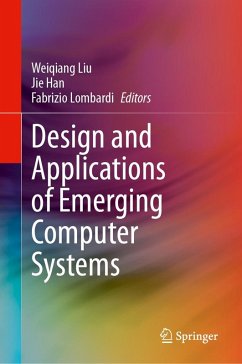
Frontiers of Quality Electronic Design (QED) (eBook, PDF)
AI, IoT and Hardware Security
Redaktion: Iranmanesh, Ali
Versandkostenfrei!
Sofort per Download lieferbar
72,95 €
inkl. MwSt.
Weitere Ausgaben:

PAYBACK Punkte
36 °P sammeln!
Quality Electronic Design (QED)'s landscape spans a vast region where territories of many participating disciplines and technologies overlap. This book explores the latest trends in several key topics related to quality electronic design, with emphasis on Hardware Security, Cybersecurity, Machine Learning, and application of Artificial Intelligence (AI). The book includes topics in nonvolatile memories (NVM), Internet of Things (IoT), FPGA, and Neural Networks.
Dieser Download kann aus rechtlichen Gründen nur mit Rechnungsadresse in A, B, BG, CY, CZ, D, DK, EW, E, FIN, F, GR, HR, H, IRL, I, LT, L, LR, M, NL, PL, P, R, S, SLO, SK ausgeliefert werden.












